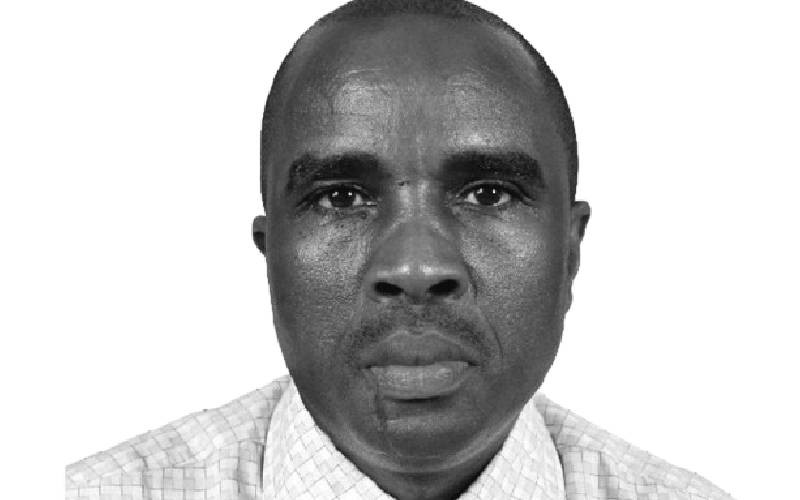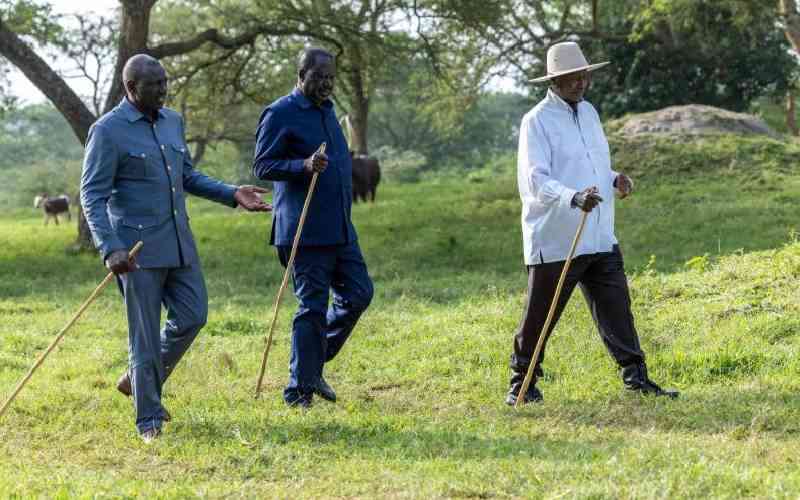One thing that is always present in power play is jitteriness. Those who have power struggle to keep it while those seeking power manufacture excuses to cause commotion in order to acquire power. Subsequently, suspicion on everything and everyone prevails as groups try to decipher what the other is up to.
Sophisticated game theorists, attempting to make themselves relevant, conjure up various explanations. They advise power players to be conversant with two competing lessons from the past, to be ruthless, cunning, and mischievous in acquiring and keeping power and to do whatever may be necessary to maintain order, unity and stability. Since circumstances - influenced by place and time - determine the scale and lessons to be applied, some political players are caught in between.
For roughly a month, following the Uhuru-Raila handshake, Kenya was in a short-lived celebratory mood. Fears of usurpation of power in the name of reconciliation arose and were reinforced by the emerging impression that Kenya has three acknowledged centres of political power.
Exploited politically
These are associated with President Uhuru Kenyatta, Deputy President William Ruto and former Prime Minister Raila Odinga. Although there are no constitutional provisions for such centres, it is appearances that matter because they can be exploited politically to force Kenyans, out of fear, to accept and regularise new unconstitutional realities.
Both Ruto and Raila have occasionally acted as if they were equal to the President. Of the two, Raila has a record of forcing his way into the Government through ‘handshakes’, and then causing internal disruption. He did it in Moi’s Kanu administration after the 1997 election, expecting to inherit Kanu after Moi left and then imploded it in 2002 when his scheme failed.
That strategy was best represented in the 2008 Kibaki/Raila ‘handshake’ that created a nusu mkate government in which Raila, as prime minister, had virtual veto on President Kibaki’s decisions. The result was a dysfunctional two-centre government. At the time, Raila and Ruto were on the same side. The ICC, separating Ruto from Raila, enabled Ruto to return to the Uhuru camp almost as an equal. The two had been in the same losing side in the 2002 General Election and had taken opposite political positions in the 2007 election.
Pre-election violence intensified after Kibaki narrowly defeated Raila, and Ruto became the image of that violence on Raila’s side. Ruto and Uhuru, on Kibaki’s side, were portrayed as symbols of ethnic hostilities during election time and were paraded at The Hague. They survived and came together for the 2012/2013 election as ‘equals’ and in Uhuru’s first administration, reflected a perception of virtual ‘co-presidency’. The President appeared to be handicapped by his deputy.
The Euros
The two 2017 elections seemingly changed the Uhuru-Ruto balance in governance as the need to accommodate Raila increased. Although attempts to create a 2008 repeat did not work in the sense that the Euros, except a few past officials in Britain and the US, did not support it the way they had in 2007/2008, he still had the ability to divert attention to himself. His ability to create tension and national paralysis, egged on by political lieutenants and ‘generals’, virtually made the country ungovernable.
Ungovernability, undermining the President’s Big Four agenda, forced Uhuru to accommodate Raila in exchange for him accepting Uhuru as the legitimate president. Given that the details of the ‘handshake’ remained vague, Raila took advantage of Uhuru’s silence to demand a governance overhaul.
His message to ODM followers that elections are ‘mini civil wars’ buttresses the feeling that he is taking over the Government, since the accommodation seemingly included entertaining calls for referendum and future power-sharing ideas, at Ruto’s seeming expense. Ruto and his followers coalesce into an increasingly vocal third power centre.
The new ‘handshake’ destabilised the Uhuru/Ruto balance and replaced it with a seeming ‘tri-presidency’. Given that Uhuru is quiet on interpreting the ‘handshake’, Raila appears to be in the political driving seat. His insistence on having his way has sent Ruto into fighting mode to stem the erosion of his position.
Uhuru, Ruto, and Raila have create political jitteriness and unwittingly give the impression that there is an uncomfortable ‘tri-presidency’ or three centres of political power in Kenya.
Prof Munene teaches history and international relations at USIU. [email protected]
Stay informed. Subscribe to our newsletter
 The Standard Group Plc is a
multi-media organization with investments in media platforms spanning newspaper
print operations, television, radio broadcasting, digital and online services. The
Standard Group is recognized as a leading multi-media house in Kenya with a key
influence in matters of national and international interest.
The Standard Group Plc is a
multi-media organization with investments in media platforms spanning newspaper
print operations, television, radio broadcasting, digital and online services. The
Standard Group is recognized as a leading multi-media house in Kenya with a key
influence in matters of national and international interest.
 The Standard Group Plc is a
multi-media organization with investments in media platforms spanning newspaper
print operations, television, radio broadcasting, digital and online services. The
Standard Group is recognized as a leading multi-media house in Kenya with a key
influence in matters of national and international interest.
The Standard Group Plc is a
multi-media organization with investments in media platforms spanning newspaper
print operations, television, radio broadcasting, digital and online services. The
Standard Group is recognized as a leading multi-media house in Kenya with a key
influence in matters of national and international interest.








